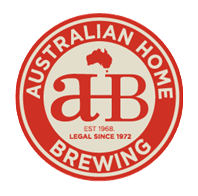How To Use A Hydrometer

As homebrewers we use the hydrometer to measure the specific gravity of the beer before and after fermentation. Learn everything there is to know about hydrometers and gravity readings.
Ultimate Home Brewers Guide on how to use your Hydrometer.
A hydrometer is used to measure the specific gravity of the beer before and after fermentation. Let’s explore this a little more.
A chemist would say that the hydrometer measures the specific gravity of the beer wort. Wort is the liquid in your fermenter which contains the malt sugars which eventually becomes beer through fermentation. In other words, the hydrometer measures the density of our beer relative to the density of water.
As a brewer we might put it differently. Hydrometers tells us how much dissolved malt extract and other sugars are in our wort or beer during fermentation. These measurements tell us a couple of things.
Firstly, the specific gravity of the beer which tells us about the progress of fermentation.
On Brew Day before fermentation starts the specific gravity is at its highest. This reading is known as the original gravity or OG. From here if we were to measure the gravity during the course of fermentation the readings would steadily drop relative to the OG number. This is because the yeast is breaking down the malt sugars converting it to CO2 and alcohol. Normally we would not take readings during a healthy fermentation especially if there is pressure and bubbling activity in the airlock.
When fermentation is complete the specific gravity will stop dropping and remain steady. This number is the final gravity of the beer or FG. To be certain that the fermentation is finished make sure there is a consistent reading over 24 to 48 hours. Once the reading is stable, it is time to bottle or keg the beer.
How to know what the alcohol content of your beer is.
The second import thing that the hydrometer tells us is the approximate alcohol content of the beer. Our AHB Hydrometer is a Triple Scale Hydrometer. One of the scales is potential alcohol, which gives us an approximate alcohol reading if all the malt extract sugars was fermented by the yeast.
It is the same as specific gravity, as the potential alcohol will be highest prior to fermentation when there is lots of unfermented sugars in the wort. The reading is lowest at the end of fermentation when all of the fermentable sugars has been consumed by the yeast.
Potential Alcohol (PA) from Hydrometer Reading.
To estimate the alcohol content you will need to know the potential alcohol reading prior to fermentation and the PA reading when fermentation is complete. This reading corresponds to the OG and the FG. Once you have the 2 readings subtract the after fermentation reading from the before fermentation reading.
For example, our Aussie Pub Draught with a OG of 1.040 had an original PA reading of 6% and a final PA of 2% after fermentation. Subtract 2 from 6 gives us an approximate alcohol of 4% in the finished product.
How to take a hydrometer reading
First, loosen your fermenter lid so it is no longer air tight. Using the fermenter tap gently pour a sample in your test tube to approximately three quarters full.
Second, lower the hydrometer into the sample and make sure it floats. Give it a little spin to make sure it is not sticking to the sides of the test tube. Next, read the specific gravity or potential alcohol where the surface of the sample intersects with the scale.
If your sample seems fizzy it is because CO2 gas produced during fermentation remains in the liquid. Excess CO2 may skew the reading so to remove it pour the sample in and out of two glasses until the fizz dissipates then take your reading.
At this point you may be tempted to taste but do not add the sample back to your fermenter.
A couple of quick tips when taking a reading. The readings on a hydrometer are most accurate around 15 degrees C. It is easy to make an adjustment with the temperature correction chart that comes as an insert in our Hydrometer Tubes. Feel free to use this if the sample is significantly warmer of cooler.
How to calculate the Alcohol Percentage in Home Brew Beer
Brewers also ask, how to calculate alcohol readings using hydrometer readings.
Using a simple formula, you can calculate the approximate alcohol percentage (ABV) of the finished beer.
(Original Gravity OG – Final Gravity FG x 1000) x 0.14
So if your OG is 1.040 and your FG is 1.010 the calculation would be.
1.040 – 1.010 = 0.03
0.03 x 1000 = 30
30 x 0.14 = 4.2
The ABV% is approximately 4.2%
Once again, this is only an approximation, but it will give you a very good idea of the alcohol strength of your beer.
